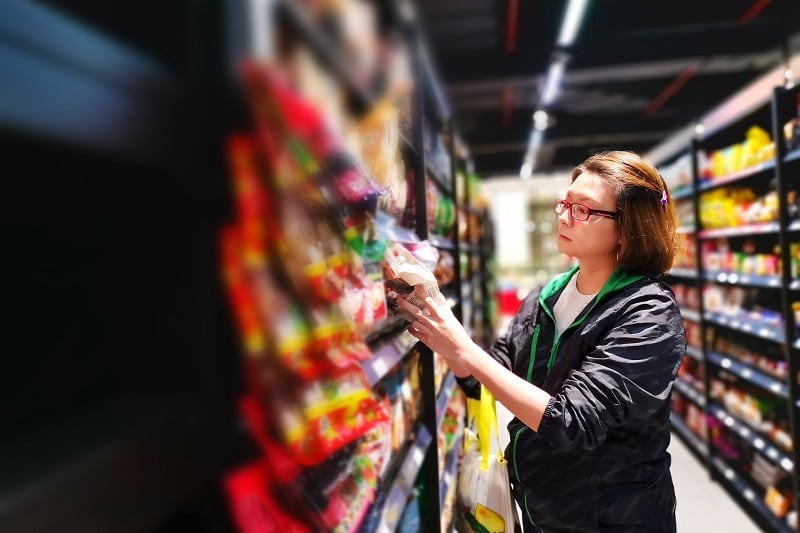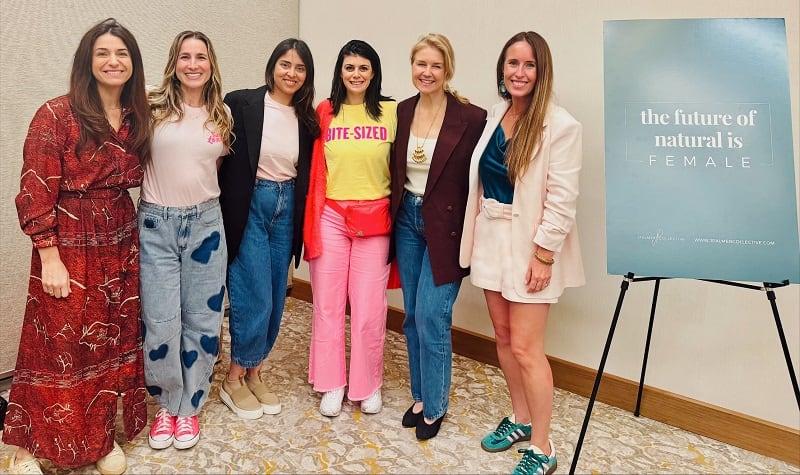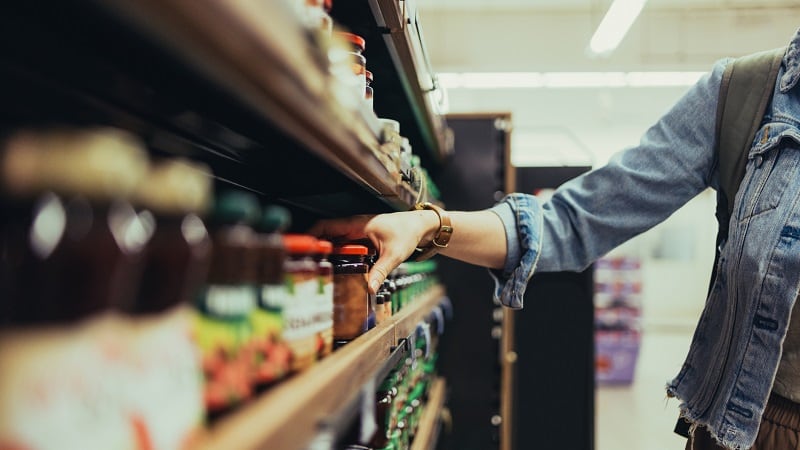Building a successful CPG company comes down to understanding metrics, like velocity and gross margins, and navigating dynamic retail channels, Spins and NielsenIQ (NIQ) representatives shared at Natural Products Expo West.
Velocity is a key metric CPG brands use to measure if a “product is actually getting traction with consumers,” explained Andrew Henkel, president of retail at Spins.
Catch-up on the Founders’ Fundamentals podcast
Founders' Fundamentals is a bi-weekly podcast series dedicated to sharing strategies and insight on how to build and grow a food and beverage CPG brand. Re-visit past episodes here:
“Velocity is basically a measure of how quickly products are moving off of a shelf. It is generally calculated using sales over some measure of distribution. There are lots of different ways that you can calculate velocity. Oftentimes, for an early-stage brand, they are going to think about it as units that are turning per store selling,” Henkel elaborated.
Startups should first focus on developing deep retail relationships with one or a few small retailers before growing nationally, Henkel noted. An early-stage brand can learn what is working and not in their product by closely tracking the metrics in those first couple of stores, he added.
Siete Foods “started in a co-op in Texas, and you see a lot of brands that started out in one store that really believed in them and emphasized their product,” Henkel said. ”Figuring out and honing your proposition is really key in those early days,” Henkel said.
Spins and NielsenIQ highlight must-have metrics
Data should always be paired with in-store insights, he added.
“It is very important to drill down to the lowest common denominator of the data. What I mean by that is getting down to the store-level data to understand. Do you have any voids? Where are the voids? Do you have out-of-stocks? Is the product making it to the shelf? That is obviously really critical,” Henkel elaborated.
Additionally, founders can use data to identify whitespace for innovation, Henkel explained. Tracking category metrics and trending attributes can inspire new product development, he added.
“Drill down to the attributes in your category, adjacent categories, and the total store and understand what are the trending attributes because attributes are generally early indicators of where shoppers are going overall and can inform your innovation strategy. So, for instance, what we have often seen is that a lot of times in the vitamins and supplements space, you will start to see trends move and then make their way over into mainstream food aisles,” he elaborated.
Startups that are pushing into retail channels must understand their metrics and how they drive incrementality - how a brand can bring consumers into a retailer - said Kenny Juskowiak, managing director of emerging brands for NIQ.
“As much as possible, know your story and have a handle on your business - be sophisticated beyond what the scale of your business is and be willing and able to speak and impress on retailers, merchants, everybody along the way the value that your business brings,” Juskowiak elaborated. “Be able to explain why you are unique, why you are different, why you are going to create incremental value for that retailer, and what job you are going to fulfill on the shelf.”
A fragmented retail landscape creates opportunities
Expo West 2025 trends: 'A tale of two cities'
Protein, gut-health benefits and global flavors were among the top trends at Expo West this year, explained President of Retail at Spins Andrew Henkel. However, Expo West was "a tale of two cities," as these trends rose while many brands doubled "down on their core," focusing on their best-performing flavors and products, Henkel added.
Additionally, some brands are appealing to consumers' emotions with products that are focused more on "vibes" than functionality, said Kenny Juskowiak, managing director of emerging brands for NIQ. For instance, LaCroix sampled its latest flavor – Sunshine – which taps into consumers' feelings, he added.
"Instead of talking about maybe what is in the product or something, you are also talking about how this product is supposed to make you feel. And a focus from beauty providers all the way through to food providers on how food or how these products are supposed to evoke emotion from you," Juskowiak added.
Many natural CPG startup brands follow a similar trajectory to market success, starting first through direct-to-consumer, then move into natural and eventually mass channels. Digital shopping options - including through social media platforms like TikTok - are creating unique opportunities for startups, explained Juskowiak.
“This fragmentation of channels is just a totally fascinating dynamic that is evolving in the industry, and it creates an immense opportunity for emerging brands to thrive because now consumers can expect to find and buy products in so many different places,” Juskowiak said.
Additionally, nimble startups can get ahead of large CPG companies when it comes to emerging digital or social media platforms, since large companies’ focus will be on established channels, Juskowiak noted.
“The challenge is really on the biggest brands out there to try to defend themselves now against way more fronts than they ever had to before,” he added.





